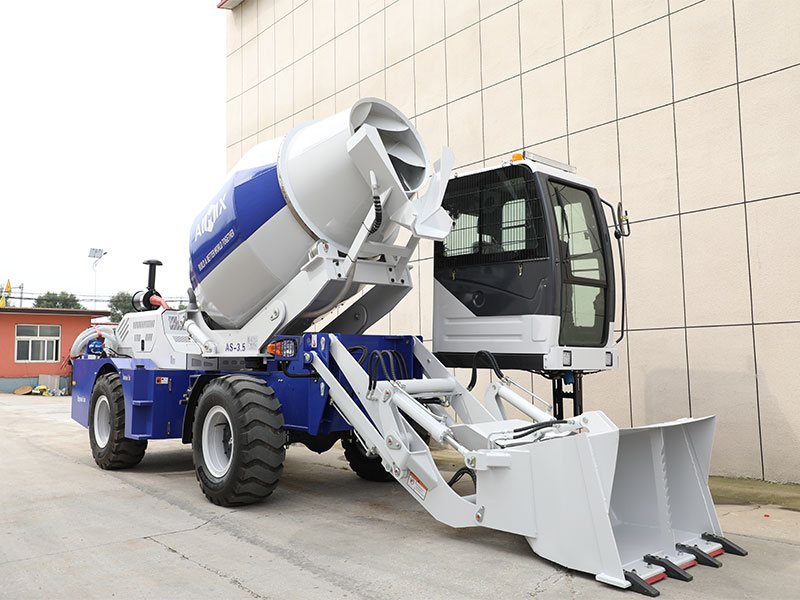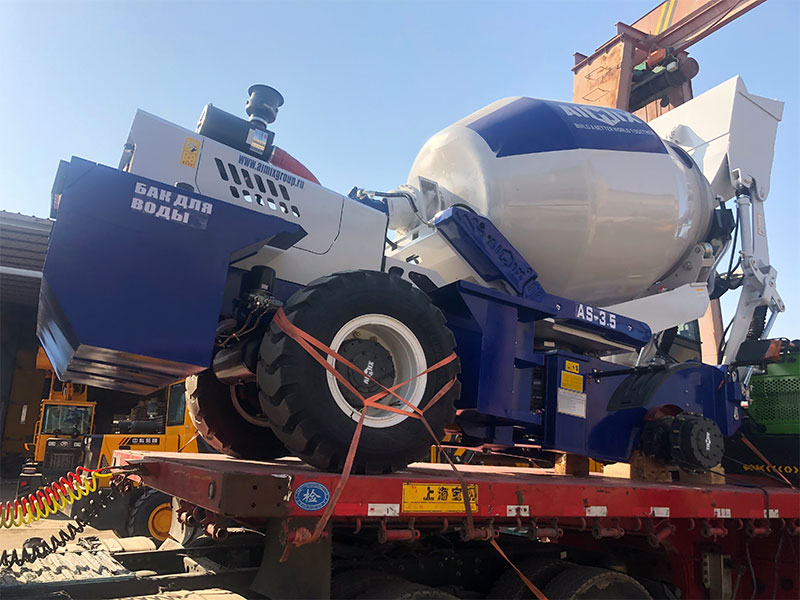Self-loading concrete mixers have emerged as game-changers in the construction industry, offering a unique blend of mobility, efficiency, and convenience. These versatile machines combine the functions of a concrete mixer, loader, and transport vehicle, streamlining the concrete production process on construction sites. To maximize the benefits of a self-loading concrete mixer, operators need to be mindful of certain tips and best practices.
Familiarize Yourself with the Machine:
Before operating a self-loading concrete mixer, it is crucial to thoroughly understand its controls, features, and functionalities. Study the operator’s manual provided by the self loading concrete mixer manufacturer and undergo proper training if necessary. Knowing how to operate the machine correctly ensures safety and efficiency on the construction site.

Perform Pre-Operation Checks:
Regular maintenance and pre-operation checks are vital to prevent unexpected breakdowns and ensure the mixer’s longevity. Before each use, inspect the machine for any visible damage, loose bolts, or leaks. Check the engine oil, hydraulic fluid levels, and the condition of the tires. This proactive approach helps identify issues early on, reducing downtime and the risk of costly repairs.
Optimize Loading and Mixing:
Efficient loading and mixing are key aspects of using a self-loading mobile concrete mixer. When loading materials, distribute the aggregate, cement, and water evenly to achieve a well-balanced mix. Follow the recommended loading sequence provided by the manufacturer to ensure optimal performance. Additionally, be mindful of the mixer’s capacity to avoid overloading, which can lead to decreased efficiency and potential damage to the machine.
Adjust Mixing Time According to Concrete Specifications:
The mixing time directly affects the quality of the concrete produced. Different concrete specifications may require varying mixing times. Consult the project specifications or concrete mix design to determine the appropriate duration for achieving the desired consistency and strength. Adhering to recommended mixing times enhances the overall quality of the concrete.
Monitor Water-Cement Ratio:
Maintaining the correct water-cement ratio is critical for the strength and durability of the concrete. Use measuring instruments to ensure accurate water additions, and avoid excessive water, as it can compromise the structural integrity of the concrete. Monitoring the water-cement ratio helps achieve consistent and high-quality concrete batches.

Optimal Travel Speed and Maneuvering:
Self-loading concrete mixers are designed for on-site mobility, and operators should be mindful of their travel speed and maneuvering capabilities. Operating the machine at an optimal speed ensures safety and stability, especially when transporting mixed concrete within the construction site. Follow recommended speed limits, especially in uneven or challenging terrains.
Proper Cleaning and Maintenance After Use:
After completing a concrete pour, it’s essential to clean the mixer thoroughly to prevent concrete buildup and potential damage. Clean all components, including the mixing drum, discharge chute, and hopper. Regular maintenance tasks, such as lubricating moving parts and checking for wear and tear, should be performed to keep the machine in peak condition.
Safety First:
Prioritize safety throughout the operation of the self loading mixer truck. Ensure that all safety features are functional, and operators are equipped with appropriate personal protective equipment (PPE). Follow established safety protocols, including proper signaling during movement, and be aware of the surroundings to prevent accidents on the construction site.
Adapt to Site Conditions:
Construction sites vary in terms of terrain, space, and accessibility. Operators should adapt their approach based on the specific conditions of the site. Familiarize yourself with the terrain, plan routes carefully, and adjust the machine’s settings as needed to navigate different challenges effectively.
Continuous Training and Skill Development:
The construction industry is dynamic, and continuous learning is essential for operators of self-loading concrete mixers. Stay updated on the latest technological advancements, attend training sessions, and exchange knowledge with peers. Enhancing skills and staying informed contribute to safer and more efficient operations.
Conclusion:
Self-loading concrete mixers have revolutionized the way concrete is produced on construction sites, offering a versatile and efficient solution. By adhering to the tips mentioned above, operators can ensure the optimal performance of these machines from aimix group co ltd china, promoting safety, efficiency, and the production of high-quality concrete. Regular maintenance, proper training, and a commitment to best practices contribute to a successful and streamlined concrete production process, ultimately benefiting construction projects and the industry as a whole.